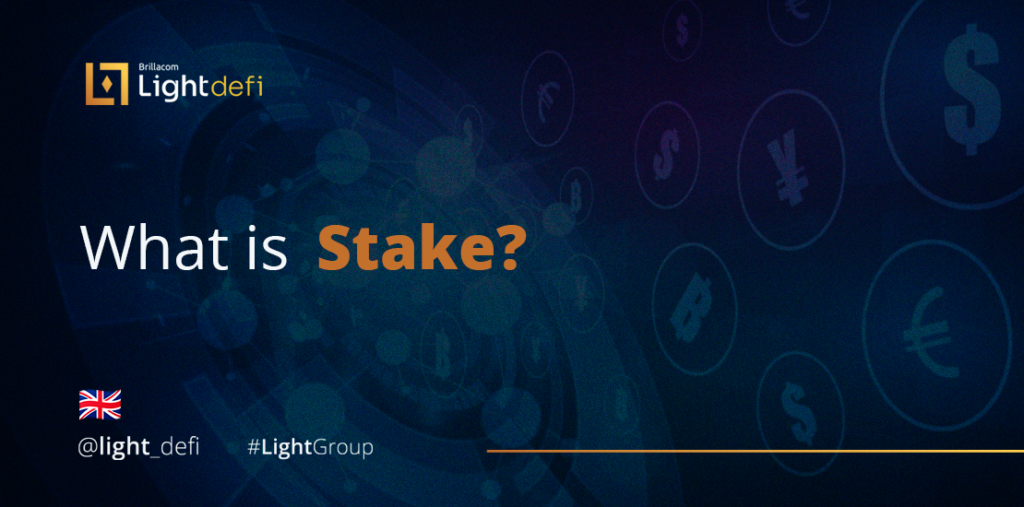Blockchain technology allows numerous mechanisms to check token transactions, such as Light DeFi (LIGHT). Among these various types of protocols, there is the famous Proof-of-Stake.
Stake or staking, that word is not so strange for those already familiar with Decentralized Finance (DeFi) applications. This article will teach you the difference between stake and staking and show how this term is important for the Light DeFi token. Check it out.
The concept of staking appeared on the market as an evolution of the first blockchain networks. Unlike cryptocurrencies like Bitcoin – which use the Proof-of-Work (Proof of Work) mechanism – Proof-of-Stake-based systems do not require data mining to check the information entered into the network.
In addition to dispensing with data mining, the Proof-of-Stake engine allows for faster, safer, and lower-cost transactions within ecosystems created from blockchain technology.
Proof-of-Stake (PoS)
Even blockchain technology has been updated since Bitcoin was created. Until then, the data mining system predominated in cryptocurrency ecosystems that used the Proof-of-Work mechanism.
However, with the consolidation of DeFi projects over the last few years and constant updates on blockchain networks, the Proof-of-Stake engine became popular in the market.
While Proof-of-Work is based on data mining, the Proof-of-Stake engine uses the balance in cryptocurrencies stored by users on the network to ensure transaction liquidity.
Thus, a reward to hodlers (who has stored cryptocurrencies) is distributed by networks that use the Proof-of-Stake mechanism.
On the other hand, blockchain systems like the Bitcoin network, which uses Proof-of-Work, pay rewards to miners for validating data entered into the network.
Staking
Staking is nothing more than a validation mechanism for data block inserted into a blockchain network. A staking program uses the Proof-of-Stake protocol, distributing rewards to users who block balances to ensure liquidity for tokens such as Light DeFi (LIGHT).
Staking programs are known to drive transactions from the DeFi universe that move billions of dollars daily. It is through this mechanism that transactions happen faster, more decentralized, and safer.
Even networks like Ethereum are adapting to the new trend in staking programs. Seeking to lessen the reliance on mining to validate blocks on the network through dynamic rates, Ethereum has released ETH 2.0, including updates such as hard fork London and Berlin.
Light DeFi
Projects like Liqui DeFi, which bets on stake programs to guarantee the liquidity of blockchain networks, are already looking to the future. With the consolidation of DeFi projects in the market, the Proof-of-Stake mechanism tends to be used more and more.
Created through the Binance Smart Chain (BSC) network, the Light DeFi token was created on August 8, 2021, and had a total issuance of 10 billion LIGHT units.
Thinking about ensuring agility and security for the network, the token uses the Proof-of-Stake mechanism to guarantee the entire functioning of your transactions.
According to the LIGHT white paper, token liquidity is guaranteed by a liquidity program that works by reserving 1% of all existing Light DeFi units.
These tokens are kept at PancakeSwap, where the buying and selling of Light DeFi take place. Through the token stake program, part of the amount received in transaction fees is reverted to users in a rewarding process.


